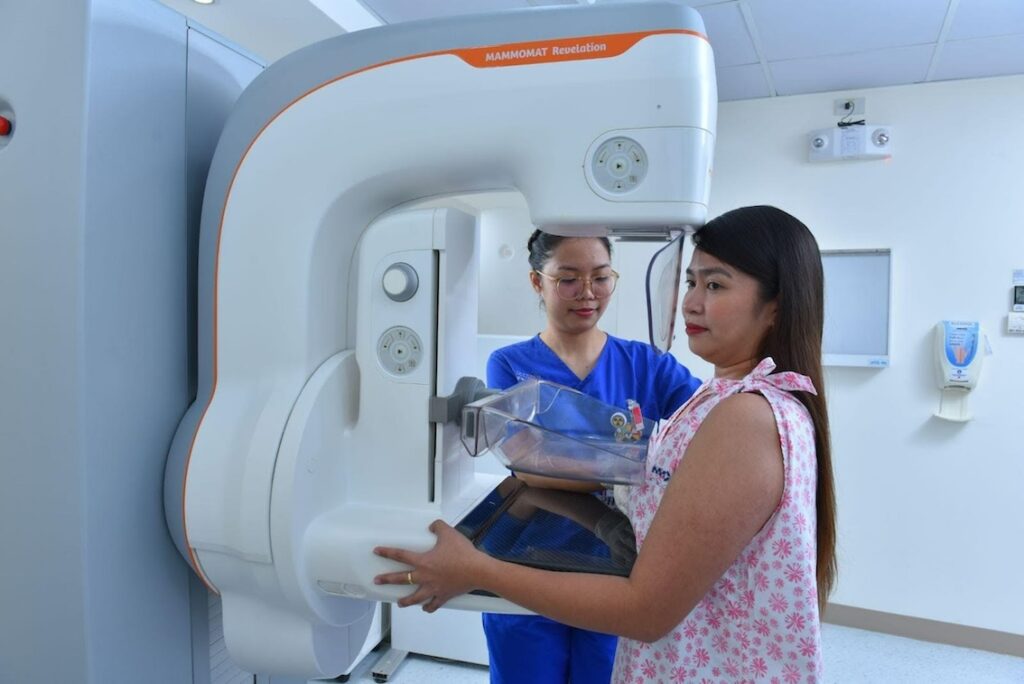MakatiMed explains the link and the steps to address it
There are two hormones responsible for ensuring that a woman’s reproductive system does its job well. The first is estrogen, which regulates the menstrual cycle and prepares the uterus for pregnancy; and the other one is progesterone, which thickens the lining of the uterus to receive a fertilized egg and is key to breasts producing milk. Together, they are also known for regulating mood, maintaining bone health, and contributing to brain function.
But prolonged exposure to estrogen and progesterone, or a high level of these hormones in the system, increases a woman’s risk for developing breast cancer because they fuel the growth of hormone-sensitive or hormone-dependent breast cancer cells.
“Hormone-sensitive breast cancer cells contain hormone receptors—estrogen receptors or ERs, and progesterone receptors or PRs. These receptors are proteins that activate when hormones bind to them,” explains Melodie Grace M. Remorca, MD from the Breast Imaging Center of top hospital in the Philippines Makati Medical Center (MakatiMed). “Once activated, these receptors affect specific genes, which, in turn, stimulate cell growth.”
Once thought to be caused by genetics (actress Angelina Jolie famously underwent a preventive double mastectomy in 2013 after learning she had the mutated BRCA1 gene, which puts her at risk of developing breast and ovarian cancer) or unhealthy lifestyle practices, the disease can be triggered by hormones too. About 2 out of 3 breast cancers are hormone receptor-positive, says the American Cancer Society.

Hormone-sensitive breast cancer is treated with hormone therapy, which works by reducing the production of estrogen and progesterone in the body, or by preventing hormones from binding to the receptors on cancer cells.
“Depending on the type of hormone therapy, this protocol can also slow the growth of cancer that has spread, and lower the risk of cancer developing in other breast tissue,” the doctor says. Used in combination with surgery, chemotherapy, and radiation therapy, hormone therapy can be given prior to surgery to shrink the tumor, making it easier for doctors to remove. When given after surgery, a patient takes it for at least five years.
If you note any symptoms of breast cancer (a lump in your breast, nipple inversion or discharge, changes in the size or shape of your breast), see a specialist immediately for an initial screening.
Hailed as the pioneer in breast imaging in the Philippines, the Breast Imaging Center at MakatiMed has offered cutting-edge and cost-effective breast cancer imaging services since 1993—from the digital breast tomosynthesis (3D mammography) to breast ultrasound (sonomammogram).
Run by an all-women team of breast radiologists, specialized radiologic technologists, specialty-trained nurses, and admin staff, the clinic also conducts ultrasound-guided core needle biopsy, stereotactic core needle biopsy, wire needle localization, cyst aspiration, fine needle aspiration biopsy, biopsy clip placement, and galactography (a medical imaging procedure used to visualize the milk ducts of the breast).
High-tech imaging and interventional procedures can determine whether you do have breast cancer, and the appropriate steps to address it.
“Hormone therapy is regarded as an effective approach to treating hormone-sensitive breast cancer. It has also shown to reduce the incidence of recurrence and improve survival rates,” shares Dr. Remorca. “Of course, the type and stage of the cancer and a patient’s overall health ultimately play a role in a patient’s prognosis, so early detection is still crucial to a favorable outcome.”
For more information, please contact MakatiMed On-Call at +632.88888 999, email mmc@makatimed.net.ph, or visit www.makatimed.net.ph. Follow @IamMakatiMed on Facebook and Twitter.

